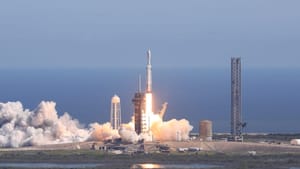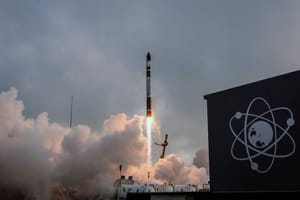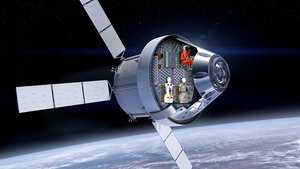
Apr 5, 2024
How Radiation Affects the Future of Artemis
The biological consequences of radiation exposure is a major source of study for future missions within deep space. Whether its putting astronauts on the moon, inhabiting gateway, or on trips to Mars we have to broaden our understanding of how radiation effects the human body. Yet often times radiation is misrepresented as a minor issue that can be countered with enough shielding.
Its difficult to quantify exactly how radiation is interacting with tissue and its even more difficult to evaluate and quantify how that will develop later on in life beyond immediate issues. Even with our studies of radiation in LEO there is an even larger number of variables as we try and venture outside the safety of humanities bubble.
In the harsh environment of space, DNA damage induced by radiation poses a significant threat to human health and safety. Radiation-induced DNA damage is primarily caused by high-energy particles such as protons, which possess sufficient energy to penetrate spacecraft shielding and human tissue. Upon exposure, the body initiates repair mechanisms in an attempt to mitigate the damage. However, the efficacy of these repair processes is often compromised due to the sheer intensity and complexity of space radiation. Consequently, the accumulation of mutations within DNA can occur, leading to a myriad of potential health complications for astronauts.
On Earth, radiation exposure is typically low-level and manageable due to the presence of the atmosphere and magnetic field, which serve as natural shields. Additionally, terrestrial activities allow for the implementation of time limits and shielding measures to minimize radiation exposure. However, in the vacuum of space, these protective mechanisms are inadequate against the relentless bombardment of high-energy radiation. Even the most advanced forms of radiation shielding prove ineffective when confronted with the galactic scale and the formidable velocities at which space radiation propagates. Thus, the challenge of mitigating radiation risks in space exploration remains a paramount concern, necessitating innovative strategies and technologies to safeguard the well-being of astronauts during prolonged missions beyond Earth's protective confines.
In assessing the potential health risks posed by space radiation to astronauts, scientists have conducted extensive evaluations of various biological effects. One recent area of significant focus revolves around understanding the risks associated with exposure to solar particle event (SPE) radiation. These evaluations encompass a range of effects, including changes in gene expression linked to processes like programmed cell death and remodeling of the extracellular matrix, oxidative stress, bacterial translocation in the gastrointestinal tract, activation of the immune system, changes in peripheral hematopoietic cell counts, occurrences of emesis, alterations in blood coagulation, impacts on skin, behavior and fatigue (including aspects such as social exploration, submaximal exercise treadmill performance, and spontaneous locomotor activity), cardiac function, changes in biological markers related to astronaut vision issues (examined through lumbar puncture, intracranial pressure measurement, ocular ultrasound, and histopathology studies), as well as assessing survival rates and potential long-term consequences like cancer and cataract development.
Numerous countermeasures have been identified that hold promise in mitigating or preventing the adverse biological effects stemming from exposure to space radiation. These countermeasures represent a crucial aspect of space exploration health management, aiming to safeguard astronaut well-being during extended missions. Radiation has to be considered for every single mission in deep space, from the materials, from the procedures, from the plan and more. One of these countermeasures as will be utilized by the Artemis program and their Orion capsule is the concept of a radiation shelter.
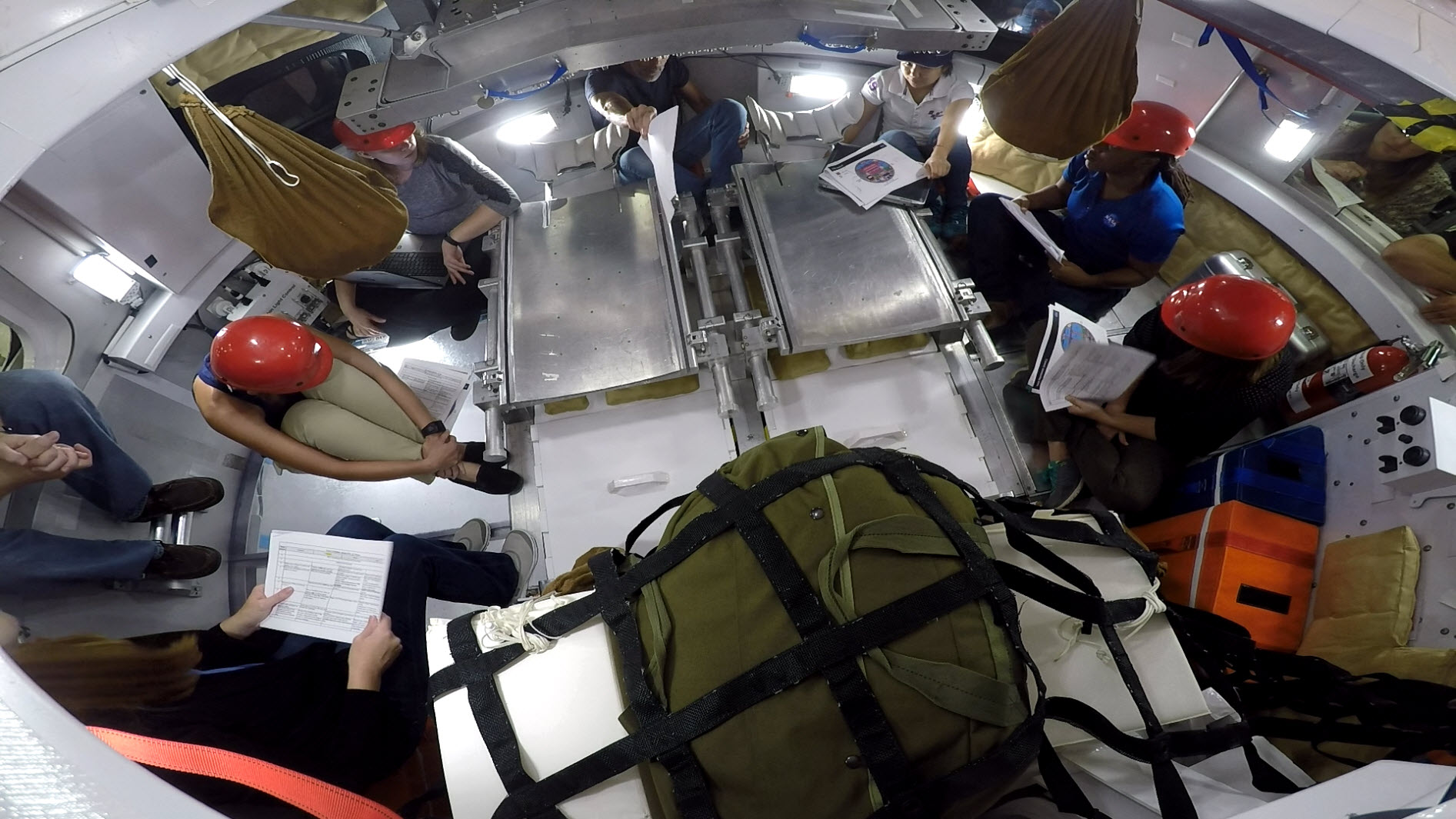
NASA is frequently conducting many tests with their hardware available to evaluate procedures and tasks to use the equipment on board to form a radiation shield for getting astronauts protected as quickly as possible. Most of these are about long term effects of radiation and these tests/studies are crucial as we venture out to Mars.
NASA also studies the consequences of radiation by actual in space testing, such as with Artemis 1, a spacecraft decked out with radiation sensing mannequins simulating different areas of the human body and sensors all over.

In interplanetary space, the primary sources of radiation are galactic cosmic rays (GCR) and solar cosmic radiation (SCR). GCR originates from outside our Solar System and is composed mostly of baryons (particles made up of quarks) and electrons. Specifically, 87% of GCR consists of protons (the nuclei of hydrogen atoms), 12% are alpha particles (helium nuclei), and the remaining 1% comprises heavier nuclei with atomic numbers up to 92, including uranium. Among these heavier nuclei are highly energetic, heavy, charged particles known as HZE particles. Notably, a specific type of HZE particle, 56Fe ions, though constituting less than 1% of the GCR particle fluxes, significantly contributes to the total radiation dose received by individual cells. This is because the radiation dose to a cell is not only influenced by the particle's energy but also by its effective charge, a property that is dependent on its atomic structure.
Understanding the composition and properties of these cosmic rays is crucial for assessing the potential risks they pose to astronauts during space travel. For instance, while GCR primarily consists of protons, alpha particles, and heavier nuclei, it's the heavier particles like 56Fe ions that can have a disproportionate impact on cellular radiation doses due to their higher effective charge. By comprehensively analyzing these radiation components, scientists can develop better strategies and technologies to protect astronauts from the harmful effects of space radiation, thereby ensuring the safety and success of future space missions.
Solar cosmic radiation (SCR) encompasses two main types: the continuous flow of low-energy solar wind particles from the Sun and sporadic bursts of highly energetic charged particles known as solar particle events (SPEs).
SPEs originate from magnetically disturbed regions on the Sun and can emit bursts of energetic charged particles unpredictably, lasting from several hours to several days. Predominantly composed of protons, SCR also contains a small fraction of helium ions and even fewer heavy ions and electrons. The protons, particularly those around 50 MeV, are the primary concern for biological effects during SPEs. Ground-based research focuses on understanding the biological consequences of proton radiation at the energies, doses, and dose-rates expected during these events.

In this specific figure, the relationship between the sunspots cycle, galactic cosmic rays (GCRs), and the state of our near-space environment is depicted. Sunspots are dark spots on the surface of the Sun caused by magnetic activity, and their frequency and intensity follow a cyclical pattern known as the sunspot cycle. Galactic cosmic rays are the high-energy particles originating from outside our solar system that interact with the solar system's magnetic fields and other phenomena.
The graph illustrates how variations in the sunspot cycle can affect the influx of galactic cosmic rays into our near-space environment, which encompasses the region of space surrounding Earth. Understanding this relationship is important for studying space weather and its potential impacts on technology, astronaut health, and other aspects of space exploration and satellite operations.
In the context of the Artemis program and forthcoming deep space expeditions, solar particle events (SPEs) and galactic cosmic rays (GCRs) stand as critical factors impacting astronaut safety and mission success. SPEs, characterized by sudden outbursts of energetic particles from the Sun's magnetically disturbed regions, pose acute radiation threats during activities like spacewalks and extended missions outside Earth's protective atmosphere. Monitoring solar activity and implementing real-time radiation detection systems are integral strategies in mission planning to provide timely warnings and enable astronauts to take precautionary measures, such as seeking shelter or modifying their tasks during SPE occurrences.
Meanwhile, galactic cosmic rays, relentless streams of high-energy particles from beyond our solar system, present a continuous radiation hazard throughout deep space journeys. Unlike SPEs, GCR exposure persists over long durations and can penetrate spacecraft shielding, potentially leading to cumulative health risks like increased cancer susceptibility. Consequently, effective shielding technologies and countermeasures are imperative for mitigating GCR exposure and ensuring radiation doses remain within acceptable limits during Artemis missions and future deep space ventures. Understanding the biological effects of GCRs and implementing robust radiation protection protocols are integral components in the comprehensive planning and execution of missions beyond Earth's protective confines.
ARS(Acute Radiation Sickness) can manifest with symptoms like nausea, vomiting, diarrhea, and fatigue, typically occurring within hours to days post-exposure. Proton radiation, predominant in SPEs, can also compromise immune function, which is already influenced by the microgravity environment of space. Reduced peripheral T-cell counts, decreased Natural Killer (NK) cell number and functionality, and altered cytokine production are among the observed effects on the immune system during space travel. These alterations can increase susceptibility to infections and hinder immunosurveillance against tumor growth. As mitigation strategies, potential countermeasures include interferons, active hexose correlated compound supplementation, and dietary supplementation with vitamins and minerals to bolster immune function and resistance to infection. Given the inevitability of radiation exposure during space missions, such countermeasures are crucial for ensuring the health and success of astronauts on long-term missions beyond Earth's protective atmosphere.
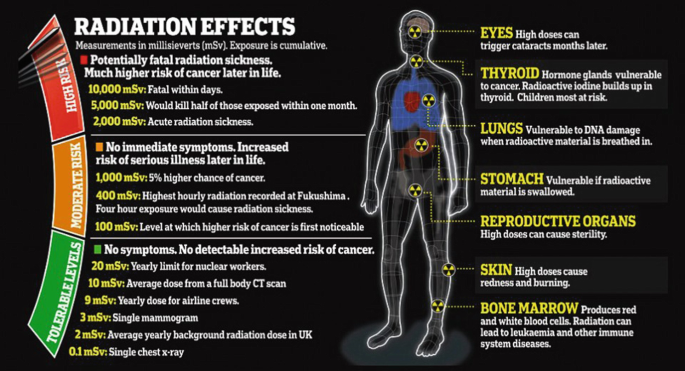
As we gaze upward, contemplating the boundless expanse of space, it's easy to feel overwhelmed by the sheer magnitude of the cosmos. Yet, within this vastness lies a story of human courage and resilience, of individuals who dared to defy the odds and venture into the unknown.
Consider the Apollo astronauts, pioneers who journeyed to the Moon and back, their spacecraft traversing through the harsh environment of space, exposed to the relentless barrage of radiation. In those moments, as they looked out upon the expanse of the lunar surface, they weren't just explorers; they were embodiments of human ambition and tenacity. Their story resonates with each of us on a deeply personal level. For within their footsteps lies the spirit of adventure that stirs within every human heart. It's the same spirit that drives us to push the boundaries of what is possible, to seek out new horizons, and to explore the uncharted territories of our universe.
In the face of adversity, they persevered, confronting the challenges of space radiation with courage and determination. And in doing so, they left behind a legacy of inspiration for future generations of explorers.
Today, as we stand on the precipice of a new era of space exploration, their example serves as a guiding light, illuminating the path forward. With each mission, we build upon their legacy, refining our understanding of space radiation and developing innovative technologies to safeguard the health and well-being of astronauts.
As we contemplate the vastness of space, we find inspiration in the courageous endeavors of the Apollo astronauts who journeyed to the Moon and back. Their spacecraft, fortified with layers of shielding materials such as aluminum, polyethylene, and boronated polyethylene, served as a beacon of human ingenuity against the backdrop of space.
Not just the final frontier but the most dangerous. One thats constantly trying to kill us and radiation is only one way. We flee to these specks of dust, these celestial bodies that seem so ground for some sort of grounding comforts.
Through meticulous testing and analysis, scientists honed their understanding of particle interactions, refining shielding strategies to minimize astronauts' exposure to radiation. Their triumphs echo through the cosmos, reminding us of the indomitable spirit that propels humanity forward in our quest for exploration and discovery.
As we embark on new missions into the unknown, let us heed the lessons of the past and carry forward the legacy of the Apollo astronauts. Their unwavering resolve in the face of adversity exemplifies the boundless potential of human endeavor. With each step we take into the cosmic expanse, may we draw strength from their example, knowing that our journey is guided by the spirit of exploration that unites us all. Together, let us continue to push the boundaries of what is possible, forging a path towards a future where the stars are within our reach.


